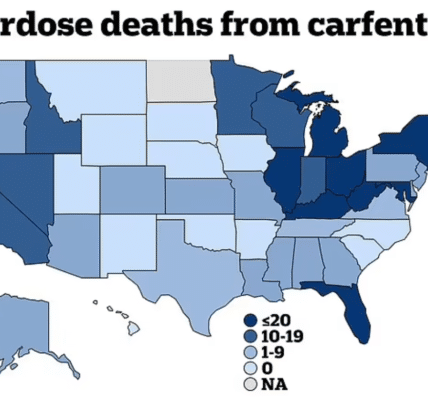Teenage Opioid Use Doubles in Ottawa

The news from the U.S.’ neighbor to the north is not good. Ottawa Public Health (OPH) just reported that the number of teenage opioid use in Ottawa doubled from 2021 to 2023. That is a terrible omen for the future of opioid addiction, in Canada and in the U.S.
Ottawa is Canada’s fourth largest city, with a population of just over one million people. It is the capital city of Canada, located near the border with the U.S. in Ontario Province. Due to universal healthcare, Ottawa has unusual visibility into health trends that escape attention in the fractured healthcare delivery system in the U.S.
In a report published on April 18, OPH provides some sobering statistics on the opioid epidemic in Ottawa:
- Opioid overdose-related emergency room visits ballooned from 448 in 2019 to 1,337 in 2023.
- Opioid-related overdose deaths also ballooned, from 65 in 2019 to 207 in 2023.
- There has been an 80% increase in opioid deaths involving a stimulant from 2019 to 2023.
- Opioid overdose-related emergency room visits declined in 2024 to 934.
- Ottawa police responded to 1,473 overdose-related calls in 2023, down 17% from 2022.
The majority of opioid-related overdose deaths were “accidental,” according to OPH. The victims, mostly men between the ages of 25-44, were not intending to commit suicide. The vast majority of opioid-related overdose deaths in 2023 involved multiple substances, including cocaine (44%), benzodiazepines (27%), methamphetamine (22%), and alcohol (8%).
More than half of Ottawa’s opioid-overdose death victims were unemployed, and nearly 20% were homeless, at the time of death. Nearly 80% fatally overdosed when there was no other person available to provide assistance, a reflection of the “social isolation” of the drug addict, according to the OPH report.
The OPH report buries the lead, unfortunately, with its coverage of drug use in junior high school, grades 7-8, and high school, grades 9-12. Shockingly, high school usage of opioids have shot up in just two years from 10% in 2021 to 20% in 2023. Even more shocking, junior high school usage of opioids has caught up with the high schoolers and is also at 20% in Ottawa in 2023. The rates are even higher province-wide, with 22% of Ontario teens reportedly using opioids in 2023.
What is driving the alarming increase in teenage opioid use? OPH points to the 75% increase from 2019 to 2023 in the number of teens who report their mental health as “fair” or “poor,” up from 21% to 37%. That 37% number masks a huge gender disparity, with 56% of female teens reporting “fair” or “poor” mental health compared with 20% of male teens. 18% of teens reported contemplating suicide in 2023 and 5% reported attempting suicide. Again, those numbers were significantly higher for girls than boys.
The statistics on teen drug usage come from the province-wide Ontario Student Drug Use and Health Survey, which has been collecting annual statistics since 1977. CBC News has a slightly different theory on what’s causing the increase. They point to a lack of health services for teenage addicts. Parents looking for residential detox beds have been shocked when OPH gives them buprenorphine and naloxone and sends them home.
It’s not so surprising that 18% of Ottawa’s teens have contemplated suicide, since that’s what’s required to get a bed in a treatment facility, according to the CBC News report. If the teens are not a threat to themselves or others, residential treatment is not usually provided. Parents are advised to work with high school counselors to access the province’s mental healthcare resources for teens.
Many of the resources for coping with teenage drug addiction in the U.S were provided through the Substance Abuse and Mental Health Services Administration (SAMHSA), which was just effectively terminated by the federal government. SAMHSA paid for the research that tells us that “75% of those who need addiction care started using as teens.”
While the overall overdose death rate has finally started to decline in the U.S., the teenage overdose death rate is still climbing. A feature article by Hannah Furfaro, mental health reporter for The Seattle Times on the problem from before the last U.S. presidential election shows Washington State teenage overdose deaths growing from less than 100 teens in 2019 to nearly 300 teens in 2023.
Compared to 300 teenage fatalities in 2023, Washington State had only 11 residential detox beds available for the entire state. The shortage of resources in shocking. Furfaro notes:
Hospitals need a special license to admit youth for inpatient addiction treatment, and none of the state’s children’s hospitals have one.
None of the state’s children’s hospitals has inpatient facilities for treating drug addiction? What’s going on here? Are their heads in the sand? Few pediatricians have received any training in screening for drug addiction or intervening with teens and their families, notes Furfaro. In a follow-on article, Furfaro provides a rundown of treatment options available for teenagers with substance abuse problems.
Meanwhile, the city of Baltimore, Maryland, has just opened its first opioid treatment center for children using opioid addiction settlement funds from drug manufacturers. This has added 15 inpatient treatment beds for patients under 21 years old with around the clock treatment and medical care. It is imperative that public health officials address this problem before it leads to historic increases in adult drug addiction.
Written by Steve O’Keefe. First published April 24, 2025.
Sources:
“Current Local Evidence to Inform Ottawa’s Overdose Prevention and Response Strategy,” Ottawa Public Health, April 18, 2025.
“Ontario Student Drug Use and Health Survey (OSDUHS),” Centre for Addiction and Mental Health, April 17, 2025.
“Opioid use among kids in Grades 7-12 doubled in 2 years: OPH,” CBC News, April 21, 2025.
“Deadlier drugs, younger addiction and no help in sight,” The Seattle Times, September 18, 2024.
“What to know about getting addiction treatment for kids in Washington, The Seattle Times, September 8, 2024.
“Baltimore will get an opioid treatment center for kids. Montgomery County will pay,” The Baltimore Banner, September 11, 2024.
Image Copyright: lightfieldstudios.




